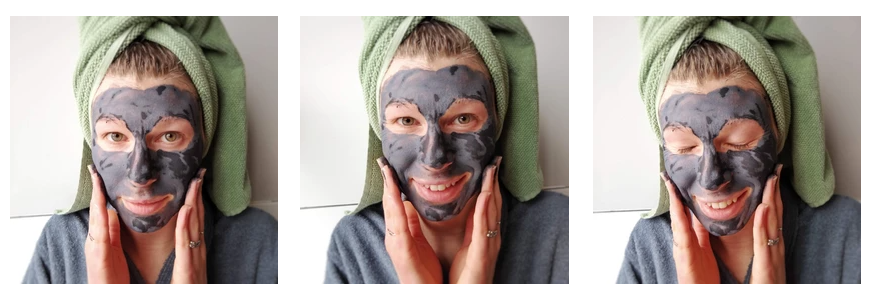Why We Use Safe Skincare, Home, & Beauty Products

Disclaimer: I am not an esthetician, nor am I an expert on products for the home and body, but I have been passionate about safer products for a long time and am always learning. This post may contain affiliate links, which means that if you purchase a product through my link, I may earn a small commission at no extra cost to you. All opinions are my own.
We live in our bodies and our bodies live in our home. No need to invade those spaces with chemicals and toxins associated with irritation, infertility, or cancer. There are many products that, while effective at cleaning the home, skin, or enhancing beauty; contain ingredients that negatively impact our health in more ways than one.
Many of these ingredients have been shown to worsen or increase risk of cancer, asthma/respiratory tract, development, or reproduction, and/or are harmful to the environment. Many of these types of ingredients have also been banned in other countries, but are currently allowed to be used in the US. Companies recognize this and are making efforts to create products with safer, clean ingredients.
For example, Beautycounter, makes skincare and makeup products free from what they’ve trademarked The Never List™ :
“Benzalkonium Chloride A disinfectant used as a preservative and surfactant associated with severe skin, eye, and respiratory irritation and allergies. Found in: sunscreens, moisturizers.
Butylatedhydroxy Anisole and Butylated Hydroxytoluene Synthetic antioxidants used to extend shelf life. They are likely carcinogens and hormone disruptors and may cause liver damage. Found in: lipsticks, moisturizers, diaper creams, and other cosmetics.
Coal tar hair dyes and other coal tar ingredients A byproduct of coal processing that is a known carcinogen. It is used as a colorant and an anti-dandruff agent. Found in: hair dye, shampoo.
Ethylenediaminetetraacetic acid (EDTA) A chelating (binding) agent added to cosmetics to improve stability. May be toxic to organs. Found in: hair color, moisturizers.
Ethanolamines (MEA/DEA/TEA) Surfactants and pH adjuster linked to allergies, skin toxicity, hormone disruption, and inhibited fetal brain development. Found in: hair dyes, mascara, foundation, fragrances, sunscreens, dry cleaning solvents, paint, pharmaceuticals.
Formaldehyde Used as a preservative in cosmetics. A known carcinogen that is also linked to asthma, neurotoxicity, and developmental toxicity. Present where quaternium-15, DMDM hydantoin, imidazolidinyl urea, diazolidinyl urea, sodium hydroxymethylglycinate, 2-bromo-2-nitropropane-1,3 diol (Bronopol), and several other preservatives are listed. Found in: shampoo, body wash, bubble bath.
Hydroquinone A skin-lightening chemical that inhibits the production of melanin and is linked to cancer, organ toxicity, and skin irritation. Found in: skin-lightening creams.
Methylisothiazolinone and methylchloroisothiazolinone Chemical preservatives that are among the most common irritants, sensitizers, and causes of contact skin allergies. Found in: shampoo, conditioner, body wash.
Oxybenzone Sunscreen agent and ultraviolet light absorber linked to irritation, sensitization and allergies, and possible hormone disruption. Found in: sunscreen, moisturizer.
Parabens (methyl-, isobutyl-, propyl- and others) A class of preservatives commonly used to prevent the growth of bacteria and mold. Parabens are endocrine (or hormone) disruptors, which may alter important hormone mechanisms in our bodies. Found in: shampoo, face cleanser, body wash, body lotion, foundation.
Phthalates (DBP, DEHP, DEP and others) A class of plasticizing chemicals used to make products more pliable or to make fragrances stick to skin. Phthalates disrupt the endocrine system and may cause birth defects. Found in: synthetic fragrance, nail polish, hairspray, and plastic materials.
Polyethylene glycol (PEG compounds) PEGs are widely used in cosmetics as thickeners, solvents, softeners, and moisture-carriers. Depending on manufacturing processes, PEGs may be contaminated with measurable amounts of ethylene oxide and 1,4-dioxane, which are both carcinogens. Found in: creams, sunscreen, shampoo.
Retinyl palmitate (Vitamin A Palmitate) Retinyl palmitate is an ingredient composed of palmitic acid and retinol (Vitamin A). Data from an FDA study indicate that retinyl palmitate, when applied to the skin in the presence of sunlight, may result in adverse health consequences like lesions and photosensitization. FDA, Norwegian and German health agencies have raised a concern that daily skin application of vitamin A creams may contribute to excessive vitamin A intake for pregnant women and other populations.
Sodium Lauryl Sulfate and Sodium Laureth Sulfate (SLS and SLES) SLS and SLES are surfactants that can cause skin irritation or trigger allergies. SLES is often contaminated with 1,4-dioxane, a byproduct of a petrochemical process called ethoxylation, which is used to process other chemicals in order to make them less harsh. Found in: shampoo, body wash, bubble bath.
Synthetic flavor or fragrance An engineered scent or flavoring agent that may contain any combination of 3,000-plus stock chemical ingredients, including hormone disruptors and allergens. Fragrance formulas are protected under federal law’s classification of trade secrets and therefore can remain undisclosed. Found in: all types of cosmetics.
Toluene A volatile petrochemical solvent that is toxic to the immune system and can cause birth defects. Found in: nail polish.
Triclosan and Triclocarban Antimicrobial pesticides toxic to the aquatic environment; may also impact human reproductive systems. Found in: liquid soap, soap bars, toothpaste. (1)”
Scary, right? All the products I used growing up had one or more of these ingredients in them. I started paying more attention to what was in my products during college, when I also got more serious about what I was putting in my body.
I cared about what I put in my body (nutrition), so I also cared about what I put on my body
Skin is the largest organ and it does not take long for chemicals to get absorbed through the skin, into the bloodstream, and affect the body’s health. But what we put on our lips or inhale from the air is often absorbed even more so as it is directly entering our bodies and absorption is not hindered or slowed by the skin barrier (2).
Switching to safer products can feel overwhelming!
My best advice is to start little by little, switching out biggest offenders first and slowly working from there – it does not have to be done all at once! Here are some tips to get started:
1. Swap inhalants & products used near the mouth
Ex. Powder, Lip gloss, lip stick, perfume, hair spray, cleaning spray, air freshener, etc.
2. Swap products used most often
Ex. Deodorant, shampoo, body wash, dish soap, etc.
3. Swap remaining products
Ex. Makeup, body lotion, laundry detergent, dish washing detergent, etc.
What we look for when swapping for safer products
The Environmental Working Group (EWG) makes finding safer products really easy. They grade or score products according to how safe they are. They even have a “EWG Verified” symbol, which does the work for us! If a product has that symbol, we can take comfort in knowing it’s safe. The EWG also has an entire site dedicated to skincare products called Skin Deep, which will score products from being EWG Verified to 10. So if it’s a 1 or 2, it’s fairly safe as well.
What we’re looking for:

What’s the difference between safe and natural?
I used to use any product that was considered “natural”, as in, used ingredients found in nature. I learned recently that “natural” does not always equate to “safe.” For example, talc is a natural and safe ingredient used in makeup products. Talc, however, is often contaminated with asbestos, which is cancer-causing: it is natural, but not safe (3).
This is also why frequent testing matters as well. Companies could obtain talc and test it for asbestos, but when obtaining talc from the same source, it needs to be retested. One segment may not contain asbestos, but another could. Not all companies do repeat testing (3).
Using safer products for the home and body is ideal for health promotion and disease prevention. All we can do is the best we can with safer swaps. It does not have to come all at once.
Sources
1. The Never List™. Beautycounter. https://www.beautycounter.com/the-never-list.
2. Toth, Stacy. Why Cleaner Cosmetics Matter: Heavy Metals, Hormone Disrupting Chemicals, Safety, Nano Particles and Glitter. Real Everything. July 12, 2019. http://realeverything.com/why-cleaner-cosmetics-matter/.
3. Toth, Stacy. Does Talc Cause Cancer. Real Everything. Dec. 13, 2019. http://realeverything.com/does-talc-cause-cancer/.




How to Prioritize Safer Skincare Swaps -
[…] Before we get into the how, though, let’s first review the why. […]